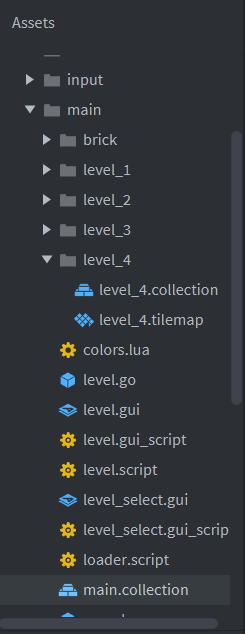Hi. Having worked through the ‘what next?’ exercises at the end of the ColorSlide tutorial, I’m wondering how other people would have approached item 4: fix the case where the player completes the last level and there is no “next” one? Or rather, what’s a better way of doing what I came up with?
starting code: GitHub - defold/tutorial-colorslide
My solution, not wanting to hard code the maximum level:
level.gui_script
function init(self)
-- get current level number
self.whoami = tostring(msg.url())
self.whoami = tonumber((string.match(self.whoami, "%d+")))
-- check for the presence of a next level
msg.post("default:/loader#loader", "check_next_level", { query_level = self.whoami + 1 })
...
loader.script
function on_message(self, message_id, message, sender)
...
elseif message_id == hash("check_next_level") then
local next_proxy = "#proxy_level_" .. message.query_level
-->> ---- <<--
local next_proxy_error = collectionproxy.missing_resources(next_proxy)
if next_proxy_error[0] == nil then
msg.post(sender, "confirm_next_level", { is_next_level = true })
end
end
back to level.gui_script
function on_message(self, message_id, message, sender)
...
elseif message_id == hash("confirm_next_level") then
-- update end-of-level behaviour based on next level query
...
This works well from the user’s perspective, though I do get a console error about the collection N+1 not existing whenever the last level is loaded:
The component could not be found: 'default:/loader#proxy_level_5
Before that I tried a custom sys.set_error_handler around where -->> — <<-- is, but ran into the problem of losing track of what level instance posted the original “check_next_level” message.
(I realise it’s a bit pointless not wanting to hard code the maximum level number when the collection proxies themselves have already been created statically, so I’m guessing I might have constructed some sort of table I could’ve used if I’d gone back and cloned them in dynamically)

